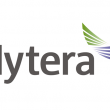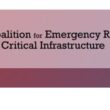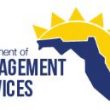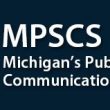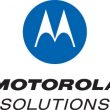No need to worry
The International Wireless Communications Exposition (IWCE) held in Las Vegas last March marked a year since the TETRA Association first attempted to raise the profile of TETRA technology in North America. This article examines the progress that has been made over the last 12 months to make TETRA available to users in the U.S. and Canada.
For those unfamiliar with the technology, TETRA (terrestrial trunked radio) is a digital trunked mobile radio standard developed by the European Telecommunications Standards Institute, or ETSI. In addition to TETRA, other significant communications standards developed by the ETSI include GSM (global system for mobile communications), DECT (digital enhanced cordless telecommunications) and DMR (digital mobile radio). TETRA was developed to meet the communications needs of traditional land mobile radio user organizations. The first TETRA commercial contract was signed in 1996. Today, the technology is in use across 115 countries and all continents, serving a range of industries and sectors, including: overland and underground rail; air and sea ports; utilities; oil and gas exploration; government and military; and public safety, a sector in which TETRA is the most widely adopted standard in the world.
As a non-proprietary open standard, TETRA has attracted numerous manufacturers, establishing a healthy and highly competitive global marketplace.
In the U.S., Project 25 is the accepted public-safety digital radio standard — having been specified and adopted by the Association of Public-Safety Communications Officials — and there is no suggestion that this will change. However, after interest from the utility, transportation and petrochemical sectors, and commitments from numerous manufacturers, TETRA technology was showcased for the first time at IWCE 2009.
In May 2009, it was announced that BC Hydro, the third-largest electric utility in Canada, would trial a TETRA system, using equipment from the Teltronic subsidiary PowerTrunk, and the U.K.'s Sepura. This trial is ongoing, and so far has proved very successful. Further trials are expected in the near future, following sustained interest from other potential users.
Although TETRA already has been approved for use throughout the world, it has to be accepted by the FCC for use in the U.S., and by Industry Canada for use in that country. Tests have shown that TETRA just exceeds the emissions masks currently used by these two organizations for type acceptance. However, this minor excursion occurs within the channel boundaries as a result of the technology's highly efficient use of the channel bandwidth.
Indeed, the adjacent channel performance is superior to many of the technologies that already are accepted by the FCC, which clearly indicates that TETRA will be as good as, or better than, existing technologies at avoiding interference. As a result, the TETRA Association has applied to the FCC for a waiver to enable TETRA to be type-accepted and for the technology to be made available to users in the U.S. Meanwhile, the association is in discussion with Industry Canada to establish the best solution to meet their procedural requirements.
The waiver application was submitted to the FCC in November 2009. A public comment process was initiated, which yielded both positive and negative responses. The positive comments focused on the range of features provided by TETRA, as well as the cost advantages of an open-standard system.
Some respondents, however, expressed concern that TETRA systems would cause interference to existing communications systems. While those concerns are understandable, potential users should consider that TETRA has been in commercial operation for a decade, coexisting without interference problems with other technologies throughout the world. It is significant to note that, although concerns were raised, no technical arguments were put forward to show why TETRA would cause interference to the technologies used in North America. The TETRA standard was created with contributions from many radio manufacturers, including Motorola, Ericsson, Marconi and Nokia. The standard specifically was designed to coexist with other digital and analog technologies, even when operating alongside such technologies in the same band.
To avoid interference into adjacent channels, the ETSI adopted an adjacent channel coupled power (ACCP) specification to ensure that spurious radiation was kept at a very low level. This specification is considered to be an effective protection and is simply a more up-to-date alternative to the old analog masks designated by the FCC and Industry Canada. In fact, the ACCP specification already is used by the FCC for operations in the 700 MHz band. TETRA meets the specification's performance requirements by a very wide margin.
Those who are concerned particularly about the coexistence of TETRA and P25 should note that these two technologies coexist in Brazil, China, Russia, New Zealand, Turkey and the U.K., among others, with no reported issues. Further, in the response to the Australian government's request last year for comments regarding potential changes to its spectrum-management policies, such interference issues were dismissed by Motorola. In its filing, the company said the following: "A trunking-only band is unnecessary, even for TETRA. It is true that older generations of TETRA base station equipment employed designs that 'spilled' energy into the adjacent channels, thereby creating the need for the allocation of contiguous blocks of spectrum. [However,] the tighter specification for newer equipment means that transmitted energy now fits within the spectral limits of the channel allocation, thereby negating the need for this outdated and inefficient practice."
Meanwhile, the number of users outside public safety has continued to grow since last year's IWCE. For example, the London 2012 Olympics will rely on TETRA, as did Beijing in 2008. In Chile, a TETRA network currently is being implemented across more than 25,000 square miles for forestry management, and Queensland, Australia's largest shopping center, as well as the country's Rio Tinto Mining Group, have turned to TETRA. In addition, railways in Austria, rapid transit systems in India (the Mumbai Metro and the Delhi Airport Express Link) and a light-rail system in Turkey all on track with TETRA. In the petrochemical arena, the Kuwait National Petroleum Company is using TETRA in a particularly hazardous environment.
Perhaps one of the most significant success stories for TETRA has been in airports. Some of the largest international hubs in the world are using TETRA, including those in Amsterdam, London and Paris in Europe, and in Beijing, Hong Kong and Bangkok in Asia. Additionally, the airports in Cape Town, South Africa, and Doha, Qatar, are just two of the 100-plus international airports that utilize TETRA technology. It is important to remember that airports have a high density of radio systems, all located in a relatively small area and using a variety of technologies. TETRA has proved to be an excellent neighbor to these other systems, with no known instances of interference.
The TETRA Association has responded to the FCC in a manner that it hopes will allay the fears of those who have expressed their concerns. The commission currently is evaluating this response. With the lack of any significant technical arguments against TETRA, the association is hopeful that the FCC will use the waiver process to enable users to gain access to TETRA's high functionality in the near future.
The alternative two-step rule-making proceeding would serve only to delay, possibly by many years, the introduction of a technology that is being used to great public benefit throughout the rest of the world.
Phil Godfrey, is the chairman of the U.K.-based TETRA Association. For more information, visit www.tetra-association.com.
Related Stories



